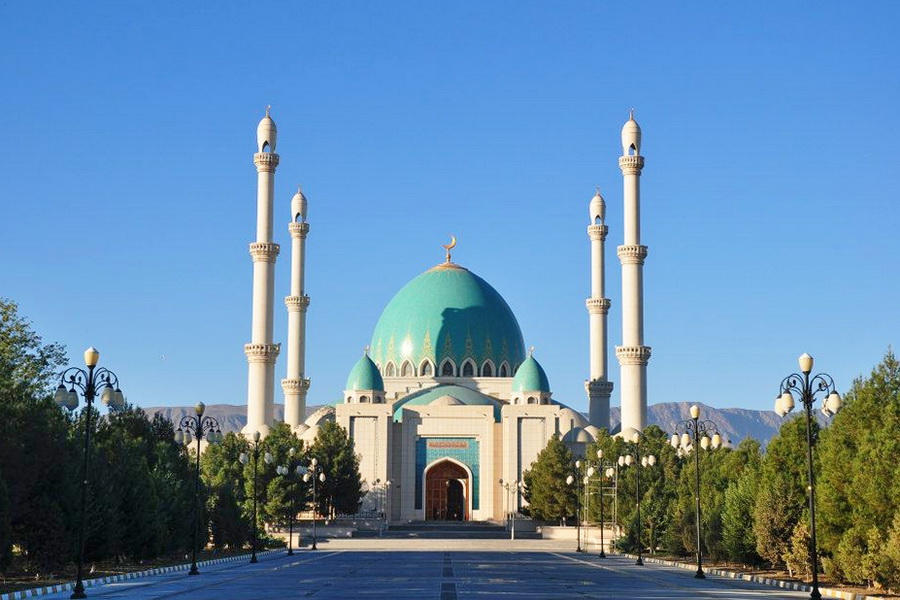Gokdepe, near Ashgabat

Gokdepe (formerly Geok-Tepe) is a small town located 45 kilometers northwest of Ashgabat. At first glance, it might seem like an ordinary provincial place, but in 1881, an event here shaped the future history of Turkmenistan. Today, about 22,000 people live here, primarily engaged in agriculture. The main attractions in Gokdepe are the Saparmurat Hajji Mosque and the ruins of the Geok-Tepe fortress.
In the 1860s, the Russian army aggressively expanded into Central Asia, capturing local khanates and states as part of the "Great Game" between the Russian and British Empires. In 1869, the Russians established the fortress of Krasnovodsk on the Caspian Sea's shores, which later became Turkmenbashi city. In response, local Turkmen tribes began preparing for invasion, starting the construction of Geok-Tepe fortress (also known as Dengil-Tepe) in the Akhalteke oasis in 1869.
The Geok-Tepe fortress was completed rapidly. It measured 1450x670 meters, covering an area of 1 square kilometer. The fortress walls stretched over 4 km, with a height of 6-7 meters and a thickness at the base of 8 meters.
In 1879, the Russian army under General Lazarev first attempted to capture the fortress. An expedition of over 7,000 people, including 4,000 infantry, 2,000 cavalry, and artillery with 16 cannons, was organized. However, due to poor planning and underestimating the fortress defenses, the Russians were defeated and retreated.
In 1880, the Russian Empire made a second attempt to control the Turkmen lands, led by General Skobelev. He meticulously prepared for the campaign, emphasizing supply lines and safe troop transfers, even constructing a railroad. The siege of Geok-Tepe fortress began on November 21, 1880.
Skobelev decided to blow up the fortress wall rather than storm it directly. On January 12, 1881, the charge was detonated, destroying about 50 meters of the wall and killing hundreds of defenders. The subsequent assault ended in the complete defeat of the Turkmen. The Russian army killed everyone in their path, even after victory was assured. Approximately 398 Russians and over 6,000 Turkmens died. Survivors were pursued for 16 kilometers, and punitive detachments searched for others hiding in the desert. The fortress was looted for four days. After the battle, the Russian army captured other Turkmen towns and villages without resistance.
Today, the Geok-Tepe fortress is a wasteland, with faint traces of the walls. In its southern part lies the Saparmurat Haji Mosque and the National Museum of Gokdepe. January 12 is commemorated annually as the Day of Remembrance for the fallen defenders of Geok-Tepe.
The Saparmurat Hajji Mosque, built in 1994-1995, honors the fortress's defenders and is named after Turkmenistan's first president's pilgrimage to Mecca. The mosque, which seems small from the outside, can accommodate 8,000 worshippers, with a large hall for men and a prayer hall for women on the second floor. Non-Muslims can enter by wearing special robes provided at the entrance.
The National Museum of Gokdepe has an excellent collection of items and documents related to the battle, including paintings illustrating the siege and massacre. Photography and videotaping are prohibited.
Although Gokdepe is not a major tourist destination, if your route from Ashgabat takes you westward, such as to the Caspian Sea or the underground lake Kov-ata, we recommend sparing an hour to visit this historically significant site that shaped Turkmenistan's fate for a century.
